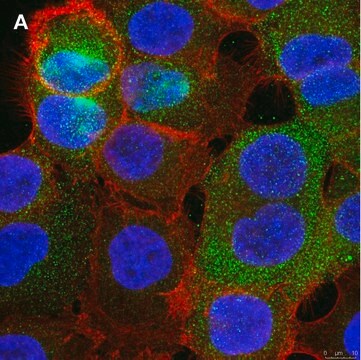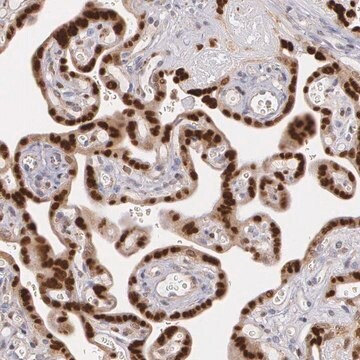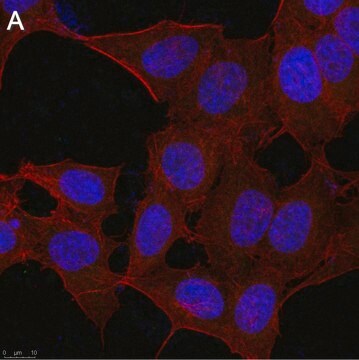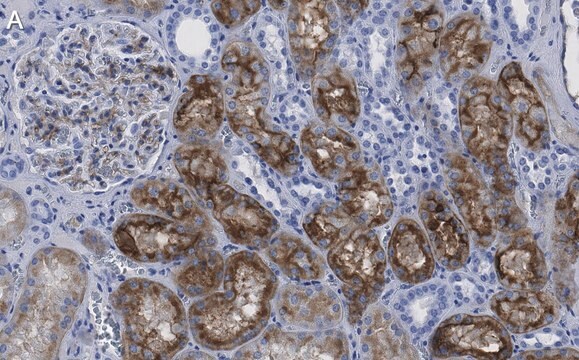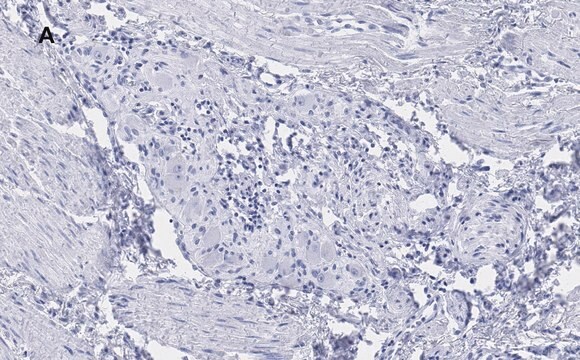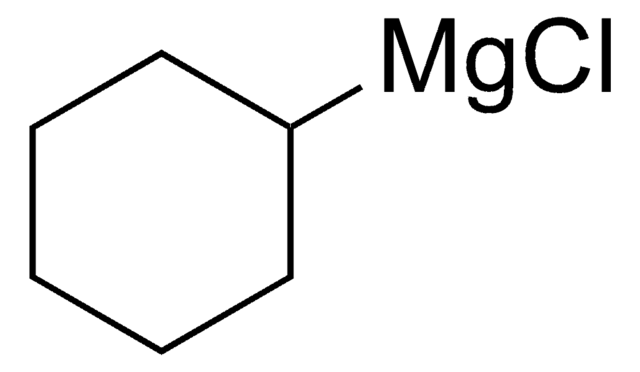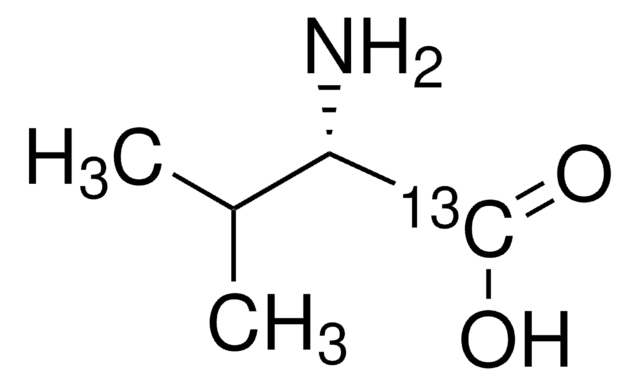일반 설명
We are committed to bringing you greener alternative products, which adhere to one or more of The 12 Principles of Green Chemistry.This antibody is Preservative-free, produced without the harm or sacrifice of animals and exceptionally stable to allow for ambient shipping and storage if needed and thus aligns with "Waste Prevention", "Designing Safer Chemicals" and "Design for Energy Efficiency".
Click here for more information.
ZooMAb® antibodies represent an entirely new generation of recombinant monoclonal antibodies.Each ZooMAb® antibody is manufactured using our proprietary recombinant expression system, purified to homogeneity, and precisely dispensed to produce robust and highly reproducible lot-to-lot consistency. Only top-performing clones are released for use by researchers. Each antibody is validated for high specificity and affinity across multiple applications, including its most commonly used application. ZooMAb® antibodies are reliably available and ready to ship when you need them.
특이성
Clone 1G12 is a ZooMAb® Rabbit recombinant monoclonal antibody that specifically detects cAMP-dependent transcription factor ATF-3 (ATF3). It targets an epitope within 15 amino acids from the C-terminal half.
면역원
KLH-conjugated linear peptide corresponding to 15 amino acids from the C-terminal half of human cAMP-dependent transcription factor ATF-3 (ATF3).
애플리케이션
Quality Control Testing
Evaluated by Western Blotting in NIH3T3 cell lysate.
Western Blotting Analysis: A 1:10,000 dilution of this antibody detected ATF3 in NIH3T3 cell lysate.
Tested Applications
Western Blotting Analysis: A 1:10,000 dilution from a representative lot detected ATF3 in lysates from A549, HeLa, and C6 cells and recombinant Human ATF3.
Immunocytochemistry Analysis: A 1:100 dilution from a representative lot detected ATF3 in A431 cells.
Enzyme Immunoassay (ELISA) Analysis: Various dilutions of this antibody detected recombinant Human ATF3.
Immunohistochemistry (Paraffin) Analysis: A 1:100 dilution from a representative lot detected ATF3 in human prostate tissue sections.
Affinity Binding Assay: A representative lot of this antibody bound His-tagged recombinant Human ATF3 with a KD of 9.7 x 10-7 in an affinity binding assay.
Note: Actual optimal working dilutions must be determined by end user as specimens, and experimental conditions may vary with the end user.
표적 설명
Cyclic AMP-dependent transcription factor ATF-3 (UniProt: P18847; also known as cAMP-dependent transcription factor ATF-3, Activating transcription factor 3) is encoded by the ATF3 gene (Gene ID: 467) in human. ATF3 is a member of the ATF/cAMP response element-binding (CREB) family that binds to the cAMP response element (CRE) (consensus: 5′-GTGACGT[AC][AG]-3′). It serves as a stress-induced transcription factor that plays a role in modulating metabolism, immunity, and oncogenesis. It acts as a hub of the cellular adaptive-response network. Multiple extracellular signals, including ER stress, cytokines, chemokines, and lipopolysaccharides can induce ATF3. It acts as a transcriptional repressor by forming a homodimer. It may repress transcription by stabilizing the binding of inhibitory cofactors at the promoter. ATF3 can also interact with proteins via its basic leucine zipper (bZIP; aa 86-149) domain and modulate cellular functions independently of its transcriptional activity. ATF3 is also involved in glucose metabolism in a variety of organs and tissues, including the pancreas, liver, adipose tissue, hypothalamus, and heart. Overexpression of ATF3 in the liver is shown to reduce the levels of gluconeogenic enzymes, including phosphoenolpyruvate carboxykinase (PEPCK) and fructose-1,6-bisphosphatase (FBP). Its expression is up-regulated by low glucose and down-regulated by high glucose levels. Lower levels of ATF3 are observed in hepatocellular carcinoma (HCC) and are associated with clinical cancer stage and pathological tumor grade in patients with HCC. Its low expression is associated with poor overall survival. Five isoforms of ATF3 have been described that are produced by alternative splicing. This ZooMAb® recombinant monoclonal antibody, generated by our propriety technology, offers significantly enhanced specificity, affinity, reproducibility, and stability over conventional monoclonals. (Ref.: Li, L., et al. (2021). BMC Med. Genomics. 14; Article number: 8; Ku, H-C., and Cheng, C-F. (2020). Front. Endocrinol. 11; 556; Lee, YS., et al. (2014). Endocr. J. 61(1); 85-90).
물리적 형태
Purified recombinant rabbit monoclonal antibody IgG, lyophilized in PBS with 5% Trehalose, normal appearance a coarse or translucent resin. The PBS/trehalose components in the ZooMAb formulation can have the appearance of a semi-solid (bead like gel) after lyophilization. This is a normal phenomenon. Please follow the recommended reconstitution procedure in the data sheet to dissolve the semi-solid, bead-like, gel-appearing material. The resulting antibody solution is completely stable and functional as proven by full functional testing. Contains no biocide or preservatives, such as azide, or any animal by-products. Larger pack sizes provided as multiples of 25 µL.
재구성
0.3 mg/mL after reconstitution at 25 µL per vial. Please refer to guidance on suggested starting dilutions and/or titers per application and sample type.
저장 및 안정성
Recommend storage of lyophilized product at 2-8°C; Before reconstitution, micro-centrifuge vials briefly to spin down material to bottom of the vial; Reconstitute each vial by adding 25 µL of filtered lab grade water or PBS; Reconstituted antibodies can be stored at 2-8°C, or -20°C for long term storage. Avoid repeated freeze-thaws.
법적 정보
ZooMAb is a registered trademark of Merck KGaA, Darmstadt, Germany
면책조항
Unless otherwise stated in our catalog or other company documentation accompanying the product(s), our products are intended for research use only and are not to be used for any other purpose, which includes but is not limited to, unauthorized commercial uses, in vitro diagnostic uses, ex vivo or in vivo therapeutic uses or any type of consumption or application to humans or animals.

